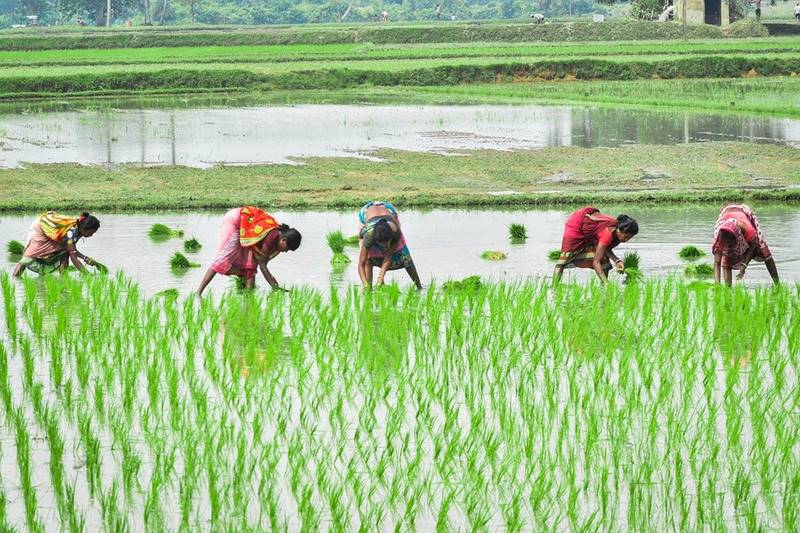Six weeks of the southwest monsoon season are over and 42 per cent of the total 694 districts in the country are facing ‘deficient’ or ‘large deficient’ rainfall. This has had a direct impact on kharif sowing in the country, as reflected in the All India Crop Situation report issued by the Ministry of Agriculture and Farmers’ Welfare.
The ministry report shows that kharif sowing has taken place over 49.99 million hectares as against 55.81 million hectares last year. Area under all major crops, such as moong (green gram), soyabean, paddy and cotton, has reported a dip due to the delay in monsoon.
As per the India Meteorological Department’s (IMD) press statement on July 8, “a hiatus in the advance of Southwest Monsoon has been observed after 19th June 2021” and it still continues.

In the first week of July, between July 1 and July 7, the country registered a rainfall departure minus 46 per cent. Northwest India and central India recorded the maximum rainfall departure in this week — minus 69 per cent and minus 68 per cent, respectively.
Meanwhile, in the southwest monsoon season (which is from June to September) this year so far, between June 1 and July 7, the country as a whole has had minus five per cent deficient rainfall.

This delay in monsoon and deficient rainfall has a direct impact on agriculture as a large number of farmers in India practice rainfed farming and are solely dependent on the monsoon rainfall for cultivating crops. Agriculture ministry notes that rainfed agriculture occupies about 51 per cent of country’s net sown area and accounts for nearly 40 per cent of the total food production.
Uneven monsoon rainfall
As per the IMD’s monsoon rainfall data, between June 1 and July 10 this year, of the total 36 meteorological subdivisions in the country, 14 are facing deficient rainfall (minus 59 per cent to minus 20 per cent).
In sharp contrast, Rayalaseema, Tamil Nadu & Puducherry, and Bihar have ‘large excess’ rainfall (60 per cent or more) of 112 per cent, 88 per cent and 69 per cent in this southwest monsoon season, respectively.
District wise data shows that 33 per cent of the total 694 districts are facing ‘deficient’ rainfall and 9 per cent have ‘large deficient’ rainfall (minus 99 per cent to minus 60 per cent). Only 30 per cent districts have had ‘normal’ rainfall. Meanwhile, 13 per cent and 15 per cent districts have reported ‘large excess’ and ‘excess’ rainfall.
This year, the IMD has forecasted a ‘normal-to-above-normal’ southwest monsoon seasonal rainfall over the country. Quantitatively, the all-India rainfall estimate has been projected at 101 per cent of the normal rainfall in the country.
Also Read: How ‘uncontrolled, unplanned’ irrigation in northern India affects monsoon rainfall?


















